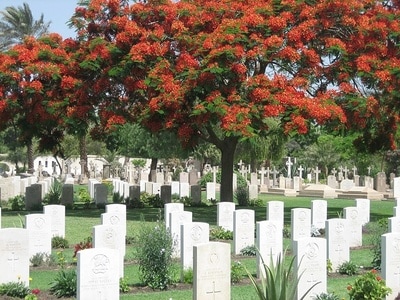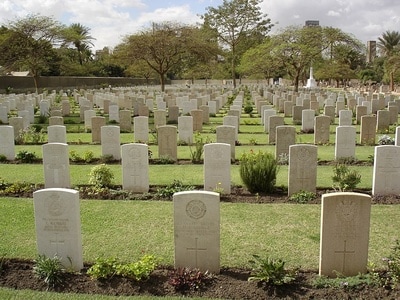CAIRO WAR MEMORIAL CEMETERY
Cairo
Egypt
Location Information
This cemetery is within the Old Cairo cemetery area, which is situated approximately 5 kilometres south east of the centre of Cairo.
The cemetery area is on the south side of the road Salah Salem, which runs west/east from the River Nile towards the green park area approximately 2 kilometres beyond and eventually towards the Citadel.
The cemetery is surrounded by a high wall and the double entrance gates are along Sharia Abu Safein. This road is parallel with the railway line which runs south from Cairo main station and both railway and Sharia Abu Safein cross over the main road.
Access up to Sharia Abu Safein is by using the northside ramp above the main road underpass, on the east side of the railway.
Visiting Information
Opening times:
Saturday to Thursday: 7.00am to 1.30pm
Friday: Closed
Please note that the cemetery gates are kept closed, although unlocked, during working hours.
Visitors can best reach the cemetery by private car or taxi.
Visitors are best advised to contact the Commission's Regional office in advance of their visit, who will advise the Head Gardener of the arrival.
Tel: +202 2290 1247 or +202 2419 5561. Please note the office closes at 12.30 GMT.
Historical Information
At the outbreak of the First World War, Cairo was headquarters to the United Kingdom garrison in Egypt. With Alexandria, it became the main hospital centre for Gallipoli in 1915 and later dealt with the sick and wounded from operations in Egypt and Palestine.
General Headquarters, Middle East Command, was set up in Cairo shortly before the Second World War, remaining there throughout the war years. In January 1941, a Royal Air Force Sector Headquarters for Fighter Defence Canal Zone was established.
Cairo was again a significant hospital centre during the Second World War.
Cairo War Memorial Cemetery was designed by Sir Robert Lorimer. It was formerly part of the New British Protestant Cemetery, but plots B, D, F, H, K, M, O, P and Q were ceded to the Commission in 1920. Some graves were brought into these plots from elsewhere in the Protestant cemetery and in 1960, 85 First World War graves were concentrated from Minia War Cemetery, 200 km south of Cairo, where maintenance could not be assured. One burial of the Second World War was also moved later from Old Cairo Old Latin Cemetery for the same reason.
There are now 2,056 Commonwealth casualties of the First World War and 340 from the Second World War buried or commemorated in the cemetery. A small number, known to have been buried in other civil cemeteries in Cairo but whose graves are now lost, are commemorated by special memorial.
Burials in the following civil cemeteries are now alternatively commemorated in Cairo War Memorial Cemetery:
Cairo (Basatin) Jewish Cemetery
Old Cairo Jewish Cemetery
Cairo Maronite Cemetery
Cairo Civil International Cemetery
Old Cairo New Latin Cemetery
Cemetery pictures used with the permission of the Commonwealth War Graves Commission
This cemetery is within the Old Cairo cemetery area, which is situated approximately 5 kilometres south east of the centre of Cairo.
The cemetery area is on the south side of the road Salah Salem, which runs west/east from the River Nile towards the green park area approximately 2 kilometres beyond and eventually towards the Citadel.
The cemetery is surrounded by a high wall and the double entrance gates are along Sharia Abu Safein. This road is parallel with the railway line which runs south from Cairo main station and both railway and Sharia Abu Safein cross over the main road.
Access up to Sharia Abu Safein is by using the northside ramp above the main road underpass, on the east side of the railway.
Visiting Information
Opening times:
Saturday to Thursday: 7.00am to 1.30pm
Friday: Closed
Please note that the cemetery gates are kept closed, although unlocked, during working hours.
Visitors can best reach the cemetery by private car or taxi.
Visitors are best advised to contact the Commission's Regional office in advance of their visit, who will advise the Head Gardener of the arrival.
Tel: +202 2290 1247 or +202 2419 5561. Please note the office closes at 12.30 GMT.
Historical Information
At the outbreak of the First World War, Cairo was headquarters to the United Kingdom garrison in Egypt. With Alexandria, it became the main hospital centre for Gallipoli in 1915 and later dealt with the sick and wounded from operations in Egypt and Palestine.
General Headquarters, Middle East Command, was set up in Cairo shortly before the Second World War, remaining there throughout the war years. In January 1941, a Royal Air Force Sector Headquarters for Fighter Defence Canal Zone was established.
Cairo was again a significant hospital centre during the Second World War.
Cairo War Memorial Cemetery was designed by Sir Robert Lorimer. It was formerly part of the New British Protestant Cemetery, but plots B, D, F, H, K, M, O, P and Q were ceded to the Commission in 1920. Some graves were brought into these plots from elsewhere in the Protestant cemetery and in 1960, 85 First World War graves were concentrated from Minia War Cemetery, 200 km south of Cairo, where maintenance could not be assured. One burial of the Second World War was also moved later from Old Cairo Old Latin Cemetery for the same reason.
There are now 2,056 Commonwealth casualties of the First World War and 340 from the Second World War buried or commemorated in the cemetery. A small number, known to have been buried in other civil cemeteries in Cairo but whose graves are now lost, are commemorated by special memorial.
Burials in the following civil cemeteries are now alternatively commemorated in Cairo War Memorial Cemetery:
Cairo (Basatin) Jewish Cemetery
Old Cairo Jewish Cemetery
Cairo Maronite Cemetery
Cairo Civil International Cemetery
Old Cairo New Latin Cemetery
Cemetery pictures used with the permission of the Commonwealth War Graves Commission

Major General John Charles (Jock) Campbell, V. C., D. S. O., M. C.
General Staff Commanding 7th Armoured Division and Royal Artillery, died 26th February 1942, aged 48. Plot K. 171.
Son of D. A. Campbell and Marion Campbell; husband of Rosamond E. Campbell, of Northampton.
Citation: The following particulars are given in "The London Gazette," of 30th January, 1942 : In recognition of most conspicuous gallantry and devotion to duty at Sidi Rezegh, in Libya. On 21st November 1941 Brigadier Campbell was commanding a small force holding important ground in the area of Sidi Rezegh Ridge and Aerodrome. The force was repeatedly attacked by large numbers of tanks and infantry. Wherever the situation was most difficult and the fighting hardest Brigadier Campbell was to be seen with his forward troops either on foot or in an open car. In this car he carried out several reconnaissances for counter attacks and formed up tanks, under close and intense fire. The following day the enemy attacks were intensified. Brigadier Campbell was always in the forefront of the heaviest fighting, encouraging his troops, staging counter-attacks and personally controlling the fire of his guns. During the final enemy onslaught he was wounded but continued most actively in the foremost positions, controlling the fire of batteries which inflicted heavy losses on enemy tanks at close range. Throughout these two days his magnificent example and his utter disregard of personal danger were an inspiration to his men and to all who saw him. His brilliant leadership was the direct cause of the very heavy casualties inflicted on the enemy. In spite of his wound he refused to be evacuated and remained with his command where his outstanding bravery and consistent determination had a marked effect in maintaining the splendid fighting spirit of those under him.

1537 Trooper
Clive Arthur
3rd Bn. Imperial Camel Corps (Australian)
24th November 1917, aged 20.
Plot O. 22.
Son of Samuel Robert and Margaret Arthur. Born at Lismore, New South Wales.
Clive Arthur
3rd Bn. Imperial Camel Corps (Australian)
24th November 1917, aged 20.
Plot O. 22.
Son of Samuel Robert and Margaret Arthur. Born at Lismore, New South Wales.

1302 Gunner Q.M.S.
Herbert Gladstone Booth
42nd Division, 1st East Lancashire Brigade, Royal Field Artillery
2nd December 1914, aged 31.
Plot B. 124.
Husband of Martha Ann Booth, of 9, Cairo St., Burnley, Lancashire.
Herbert Gladstone Booth
42nd Division, 1st East Lancashire Brigade, Royal Field Artillery
2nd December 1914, aged 31.
Plot B. 124.
Husband of Martha Ann Booth, of 9, Cairo St., Burnley, Lancashire.
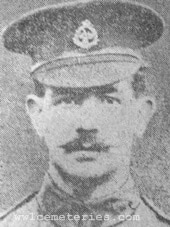
145166 Private
John Bromley
Royal Army Medical Corps
20th March 1918.
Plot O. 136.
Lived at 36 Scotts Terrace, Burnley, Lancashire
John Bromley
Royal Army Medical Corps
20th March 1918.
Plot O. 136.
Lived at 36 Scotts Terrace, Burnley, Lancashire
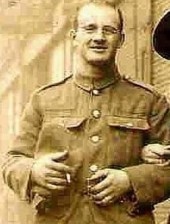
M2/098039 Private
Ernest William Dennison
619th M. T. Coy. Army Service Corps.
22nd May 1916, aged 33.
Plot F. 70.
Son of William and Susannah Dennison, of St. Annes-on-the-Sea, Lancs; husband of Gertrude Valentina Dennison, of 96, Brookside Rd. Golders Green, London.
One of three brothers killed during the First World War, Thomas who is buried in Ruyaulcourt Military Cemetery and Charles who is buried in Janval Cemetery, Dieppe.
Picture courtesy of Stephen Singleton.
Ernest William Dennison
619th M. T. Coy. Army Service Corps.
22nd May 1916, aged 33.
Plot F. 70.
Son of William and Susannah Dennison, of St. Annes-on-the-Sea, Lancs; husband of Gertrude Valentina Dennison, of 96, Brookside Rd. Golders Green, London.
One of three brothers killed during the First World War, Thomas who is buried in Ruyaulcourt Military Cemetery and Charles who is buried in Janval Cemetery, Dieppe.
Picture courtesy of Stephen Singleton.
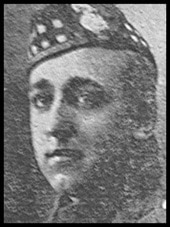
16421 Signaller
Alexander Leonard Gray
1/4th Bn. Royal Scots Fusiliers
12th November 1917.
Plot F. 335.
Born Briercliffe, enlisted Nelson
Lived in Harle Syke
Alexander Leonard Gray
1/4th Bn. Royal Scots Fusiliers
12th November 1917.
Plot F. 335.
Born Briercliffe, enlisted Nelson
Lived in Harle Syke
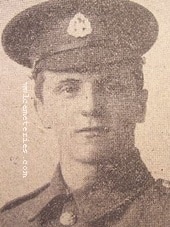
4299 Private
William Heyworth
1st/4th Bn. East Lancashire Regiment
15th December 1916.
Plot F. 171.
William Heyworth
1st/4th Bn. East Lancashire Regiment
15th December 1916.
Plot F. 171.
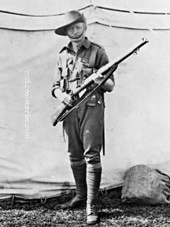
298 Private
William Maitland Innes
2nd Bn. Australian Infantry, A.I.F.
16th May 1915.
Plot B. 252.
William Maitland Innes
2nd Bn. Australian Infantry, A.I.F.
16th May 1915.
Plot B. 252.
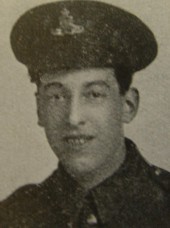
210983 Gunner
Jack Herbert Mugford
122nd Anti-Aircraft Section, Royal Garrison Artillery
3rd July 1918, aged 23.
Plot O. 203.
Son of Helena Phoebe Mugford, of 44, Stanger Rd., Norwood, London, and the late John Hearn Searle Mugford.
Jack Herbert Mugford
122nd Anti-Aircraft Section, Royal Garrison Artillery
3rd July 1918, aged 23.
Plot O. 203.
Son of Helena Phoebe Mugford, of 44, Stanger Rd., Norwood, London, and the late John Hearn Searle Mugford.

3147 Private
William Gregory Sharp
8th Bn. Australian Infantry, A. I. F.
23rd November 1915, aged 19.
Plot D. 203.
Son of Malcolm and Ellen Sharp, of Corindhap, Victoria, Australia.
Picture courtesy of great nephew, Alan Sharp
William Gregory Sharp
8th Bn. Australian Infantry, A. I. F.
23rd November 1915, aged 19.
Plot D. 203.
Son of Malcolm and Ellen Sharp, of Corindhap, Victoria, Australia.
Picture courtesy of great nephew, Alan Sharp
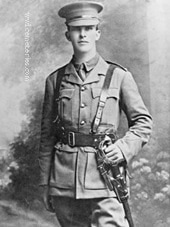
Lieutenant
Frederick George Smith
2nd Bn. Australian Infantry, A.I.F.
8th May 1915.
Plot B. 226.
Son of George and Julia Smith, of 154, Lawson St., Hamilton, Newcastle, New South Wales. Born in Australia.
Frederick George Smith
2nd Bn. Australian Infantry, A.I.F.
8th May 1915.
Plot B. 226.
Son of George and Julia Smith, of 154, Lawson St., Hamilton, Newcastle, New South Wales. Born in Australia.

71394 Private
Ernest Thorpe
18th Sanitary Section, Royal Army Medical Corps.
7th July 1918, aged 30.
Plot O. 25.
Son of Joshua and Ann Thorpe; husband of Sarah Ann Thorpe, of 40, Norris St., Farnworth, Bolton.
Picture courtesy of granddaughter, Christine Ashurst
Ernest Thorpe
18th Sanitary Section, Royal Army Medical Corps.
7th July 1918, aged 30.
Plot O. 25.
Son of Joshua and Ann Thorpe; husband of Sarah Ann Thorpe, of 40, Norris St., Farnworth, Bolton.
Picture courtesy of granddaughter, Christine Ashurst

476 Private
Albert Foster Wood
2nd Bn. Australian Infantry, A.I.F.
13th May 1915, aged 38.
Plot B. 246.
Son of Ammon and Mary Ann Wood. Born at Geelong, Victoria, Australia.
Albert Foster Wood
2nd Bn. Australian Infantry, A.I.F.
13th May 1915, aged 38.
Plot B. 246.
Son of Ammon and Mary Ann Wood. Born at Geelong, Victoria, Australia.

196019 Able Seaman
Henry John Wilson
(R.F.R. Ch. B. 8013 CH). H.M.S. "Euryalus." Royal Navy.
24th May 1915, aged 35.
Plot B. 261.
Husband of Emma Amelia Hollis (formerly Wilson), of Block 2, Police Hutments, Aerodrome, Charlton-cum-Hardy, Manchester.
(The following Courtesy HMS Euryalus Associated Website)
In April, Wemyss was put in charge of the main landings at Gallipoli and hoisted his flag in Euryalus, which had separately joined the force build-up.
At nightfall on 24 April 1915, three companies of the 1st Battalion XX of The Lancashire Fusiliers were transferred from their transports to Euryalus, one of the ships transporting the .assault force to the beaches. The troops remember being received well on board by the sailors who gave up their bread ration for the soldiers.
At 0400 in the morning of 25 April 1915, the soldiers clambered down into a flotilla of warship boats and merchant ship lifeboats, towed by Euryalus' steam cutters, and at 0550 the tows were slipped 1,500 yards from 'W' beach. The landing was achieved against appalling odds, with Euryalus sailors pulling the Battalion ashore in the boats and beaching them within point-blank range of the Turkish gunfire. Typical of the boat's crewmen was peacetime merchant seaman, Able Seaman Thomas Kibblewhite (pictured right), Royal Naval Reserve, aged 29, who was killed in this action. The Battalion casualties were 11 officers and 350 men whilst 63 of the 80 Euryalus ratings manning the boats were killed or wounded. During the assault the Lancashire Fusiliers won 6 VC's "before breakfast". Following the landing, Euryalus steamed close inshore for Wemyss to supervise all aspects of the operation. Despite the bravery of the allied troops, the subsequent lack of success ashore is well known, and eventually Wemyss organised and commanded the evacuation from Euryalus in mid-December. 80,000 men were withdrawn with just one casualty
Picture courtesy of grandson, Ted Wilson-Barnes
Henry John Wilson
(R.F.R. Ch. B. 8013 CH). H.M.S. "Euryalus." Royal Navy.
24th May 1915, aged 35.
Plot B. 261.
Husband of Emma Amelia Hollis (formerly Wilson), of Block 2, Police Hutments, Aerodrome, Charlton-cum-Hardy, Manchester.
(The following Courtesy HMS Euryalus Associated Website)
In April, Wemyss was put in charge of the main landings at Gallipoli and hoisted his flag in Euryalus, which had separately joined the force build-up.
At nightfall on 24 April 1915, three companies of the 1st Battalion XX of The Lancashire Fusiliers were transferred from their transports to Euryalus, one of the ships transporting the .assault force to the beaches. The troops remember being received well on board by the sailors who gave up their bread ration for the soldiers.
At 0400 in the morning of 25 April 1915, the soldiers clambered down into a flotilla of warship boats and merchant ship lifeboats, towed by Euryalus' steam cutters, and at 0550 the tows were slipped 1,500 yards from 'W' beach. The landing was achieved against appalling odds, with Euryalus sailors pulling the Battalion ashore in the boats and beaching them within point-blank range of the Turkish gunfire. Typical of the boat's crewmen was peacetime merchant seaman, Able Seaman Thomas Kibblewhite (pictured right), Royal Naval Reserve, aged 29, who was killed in this action. The Battalion casualties were 11 officers and 350 men whilst 63 of the 80 Euryalus ratings manning the boats were killed or wounded. During the assault the Lancashire Fusiliers won 6 VC's "before breakfast". Following the landing, Euryalus steamed close inshore for Wemyss to supervise all aspects of the operation. Despite the bravery of the allied troops, the subsequent lack of success ashore is well known, and eventually Wemyss organised and commanded the evacuation from Euryalus in mid-December. 80,000 men were withdrawn with just one casualty
Picture courtesy of grandson, Ted Wilson-Barnes

